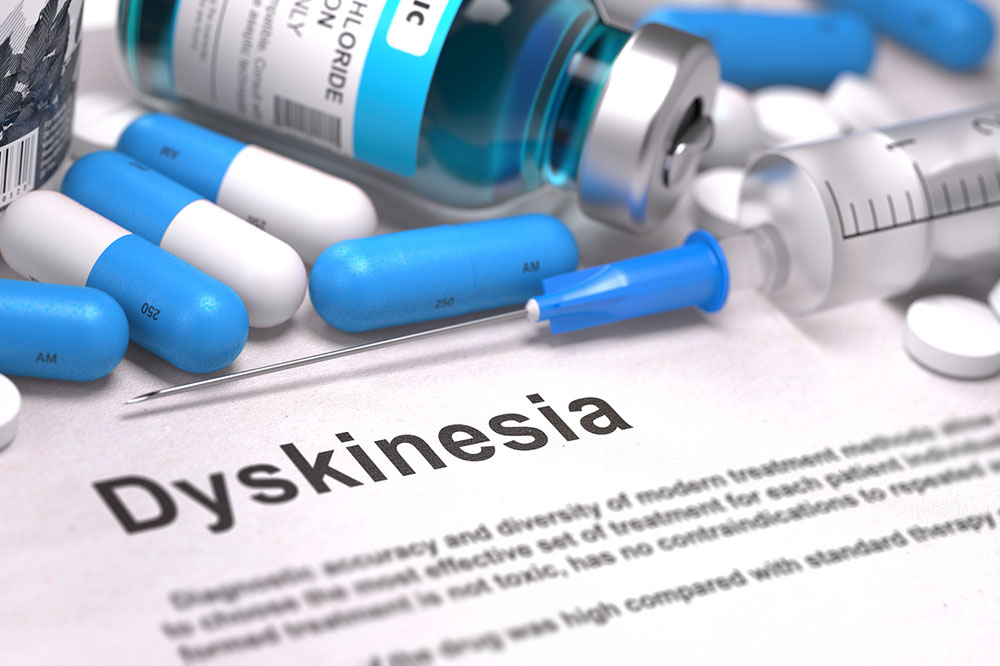
Here is a guide to living with dyskinesia
Dyskinesia is described as an abnormal, involuntary, and uncontrollable movement. It is not a disease on its own but a symptom of various other severe conditions. It can range from mild to severe and can significantly impact the everyday life of the person dealing with it. It is usually seen in those with Parkinson’s disease; however, it can also occur in other conditions, such as movement disorders. Although it generally affects legs and arms, it can also spread to the torso, neck, head, and, in rare circumstances, it can affect speech and respiratory muscles.
Causes
Dyskinesia is normally caused by the long-term use of the drug levodopa. Levodopa is basically used in treating Parkinson’s disease as it helps increasing the production of dopamine in the brain. People with Parkinson’s lack dopamine-producing brain cells, which is why they are given levodopa. An individual’s dopamine rises with the use of this drug and falls when not used. And it is this fluctuation in the dopamine level that causes the involuntary movements of dyskinesia.
Symptoms
The symptoms of dyskinesia may vary from one person to another. In some people, symptoms can be mild with slight movement in legs and arms, whereas in others, they can be severe, making multiple parts of the body react involuntarily. Here are a few common symptoms of dyskinesia that you must know about.
- Fidgeting
- Twitching
- Restlessness
- Swaying of the body
- Bobbling of the head
Diagnosis
A neurological expert carefully observes the different types of movements associated with distinct varieties of dyskinesia. He considers the area of the body affected and the type of movements taking place to perform a proper diagnosis. He may use an abnormal involuntary movement scale to evaluate the overall impact of dyskinesia. So, when diagnosing involuntary body movements, you can expect a physical examination, few neurological tests, and a review of past medical history.
Treatment
The treatment can vary based on the kind of dyskinesia an individual is dealing with or the symptoms they are experiencing. So here are the two common treatment methods that you can take a look at:
- Changes in medication
In the case of levodopa-induced dyskinesia, making a few changes in the timing and controlling the dose can help manage dopamine levels and decrease the symptoms. Along with this, an extended-release form of amantadine can also make it easier to control erratic movements of the body. Similarly, the doctors may prescribe other neurological drugs to control your involuntary body movements. - Deep brain simulation procedure
Deep brain simulation is a surgical procedure used to improve the condition of people dealing with dyskinesia. However, this may not be suitable for everyone. For this treatment, a person needs to get diagnosed with Parkinson’s for at least four years, along with recurrent episodes of dyskinesia. This procedure involves the placement of electrodes in the parts of the brain that control movement and posture.
Natural remedies, best foods, and preventive measures
Along with the clinical treatment recommended by the doctors, you can also try some natural remedies. Although there is no proof that they can fully treat it, they can help with the movements. These may include consumption of Ginkgo biloba, melatonin, vitamin B6, and vitamin E. However, you must talk to your doctor before taking any supplements for your symptoms. While dealing with dyskinesia, you should also emphasize consuming berries, fruits, vegetables, and herbs to help in the better functioning of the body. Moreover, you must keep in mind that regulated use of dopamine and early diagnosis are the only ways of preventing the disease from worsening.
Dyskinesia can come in a variety of forms and leave a substantial impact on your daily life. If you are experiencing even slight uncontrolled movement, then you must immediately consult a health expert.




